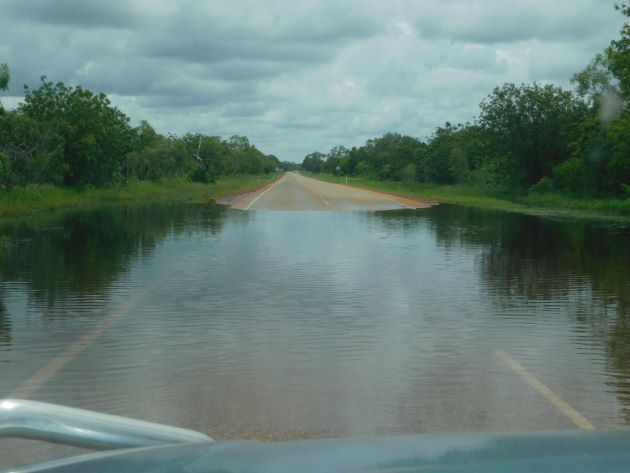
Due to the recent flooding rains we are still restricted as to where we can go bird-watching. Often the rainfall is isolated and the storms arrive at any time of day or night and you have to try and plan any trip accordingly. Before we go anywhere we check the Main Roads Travel Map, but we know we can’t go north for a long time yet. The highway has been destroyed isolating both Derby and Fitzroy Crossing. The bridge over the Fitzroy River at Fitzroy Crossing has been destroyed and it can’t be repaired for a very long time, so for now we are bird-watching close to home.
Even a few kilometres from home the highway out of town goes underwater when it really rains and the header photo shows why you need a four-wheel drive here! We drive slowly across Roebuck Plains on each trip we make to go bird-watching at this time of year. There are usually four long sections of water across the highway and once it gets too deep the highway gets closed. The bitumen has to be repaired most years after these big flooding events and by driving slowly it helps to stop the bitumen from falling apart quite as fast. You also can’t see the big holes in the bitumen under the water if you drive too fast and you might miss some of the many birds that now call this area home.
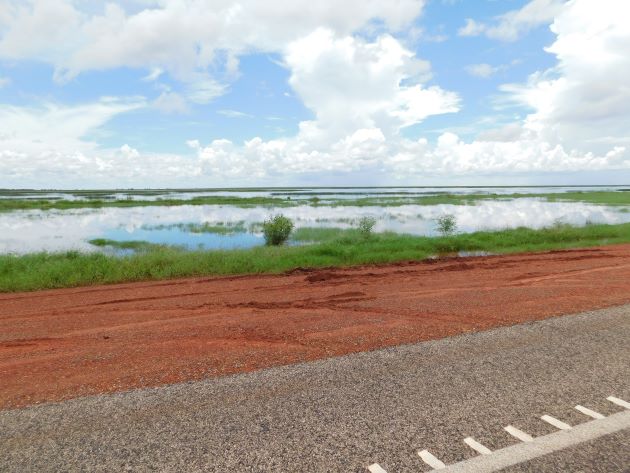
Sloppy edges if you leave the bitumen
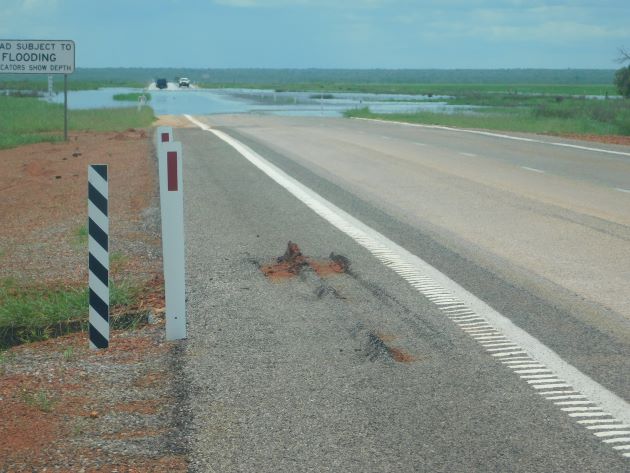
Bitumen suffering from wet weather
It is about 45 kilometres from town to the Roebuck Plains area and the crossing is approximately 12 kilometres long. We usually allow a couple of hours to drive slowly across the 12 kilometre length and back to make sure we see as much bird-life as possible. From one day to the next it can really vary and even the time of day. You can arrive in sunshine and before you know it you are under the blackest clouds. Invariably we get a free car wash with rain water from above and below on these trips. We also get to enjoy some spectacular cloud formations. At this time of year it is all about both weather and bird-watching. The highway has a rumble strip both through the middle and down each side and white posts to help you guide you along the length of it. Everyone is courteous and allows vehicles through one by one.
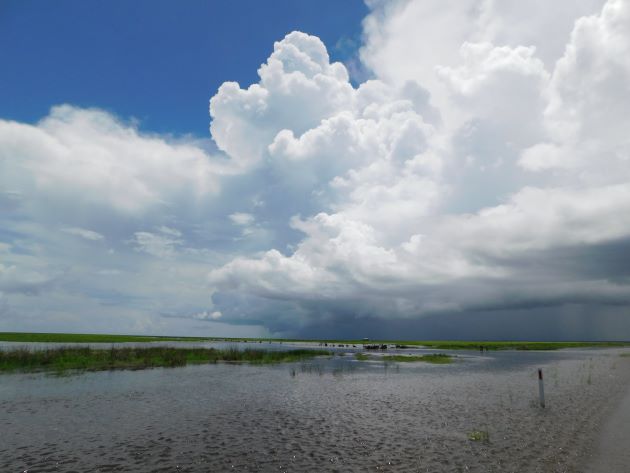
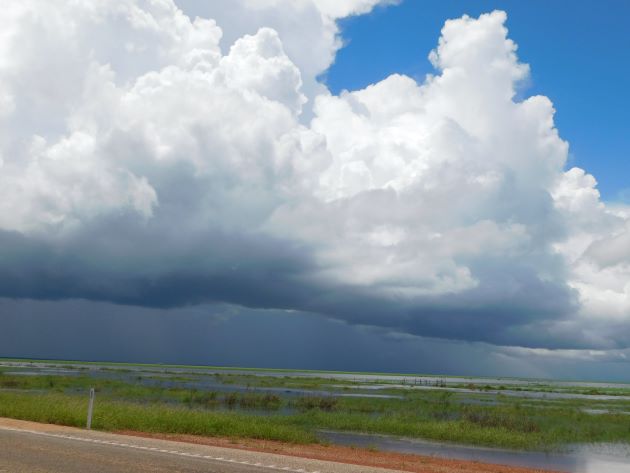
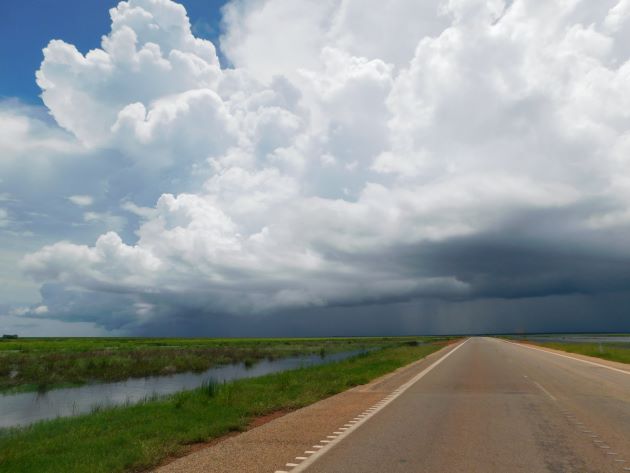
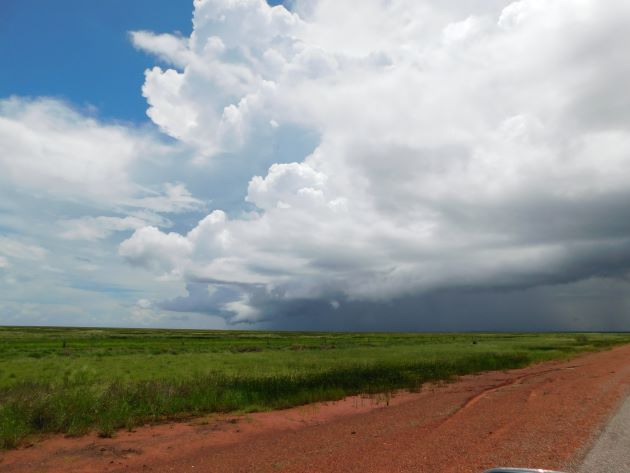
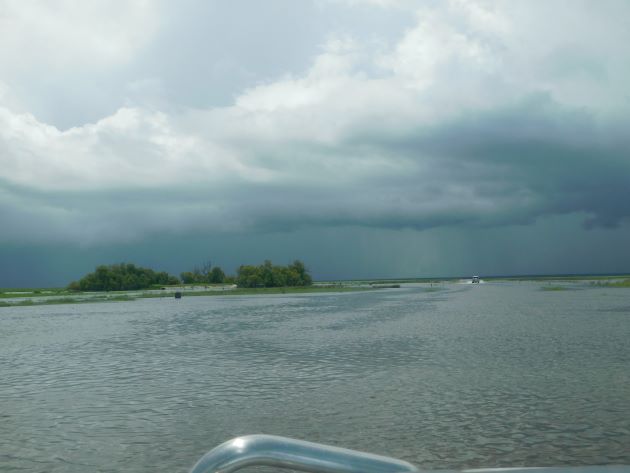
Driving along the highway surrounded by storms
We are starting to observe a few more dragonflies than normal now and many of them are doubled-up! Looking back through my photos I soon found one had managed to photo-bomb on the right hand side.
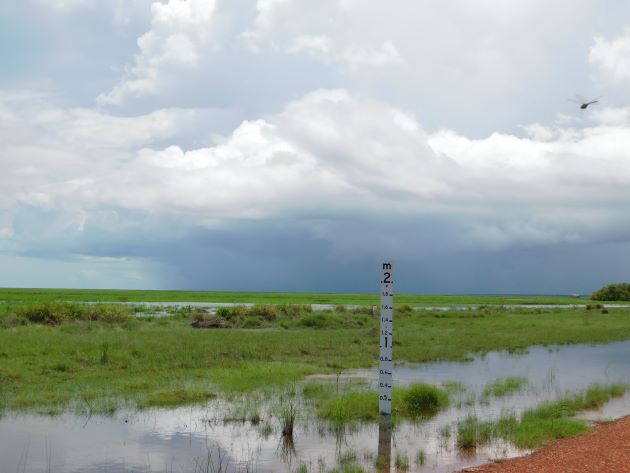
Dragonfly and water depth gauge on the edge of the highway
We have been pleased to see the return of a Pied Heron recently, which is a good indication that we are in for a bit more rain! There are also large numbers of Glossy Ibis that have recently arrived to breed. Magpie Geese are also here in the hundreds and that is only what we can see from the bitumen! We fear that some may have tried to nest on areas that then got inundated when more rain fell, but they will no doubt attempt to breed again. When storms come through the Magpie Geese can often be seen taking to the skies.
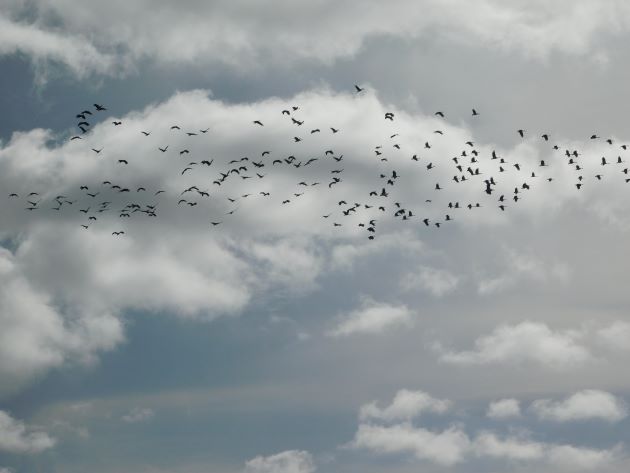
Magpie Geese in flight
Whiskered Terns have also moved to the area to feed and no doubt breed. Other birds just drop by for a while and move on again like the Australian Pelican.
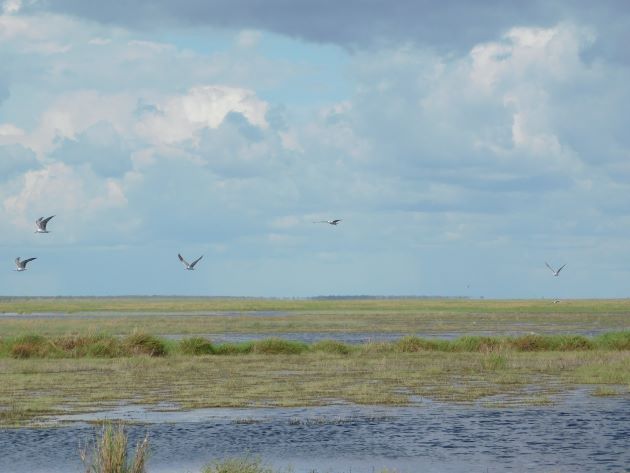
Whiskered Terns
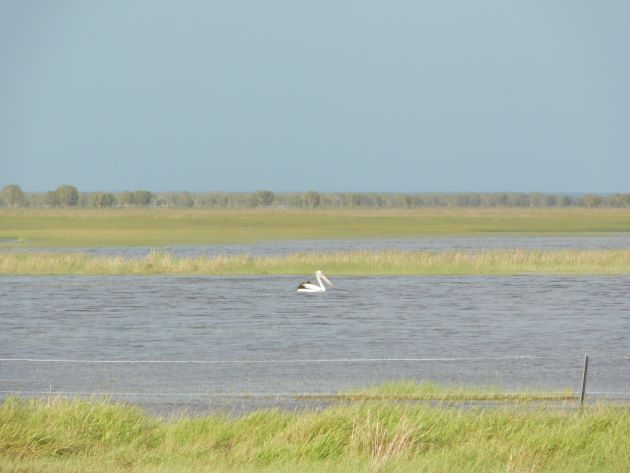
Australian Pelican beside the highway
Australasian Swamphens are also now calling the area home and are often observed just wandering along the edge of the highway. A vehicle makes for an excellent air-conditioned bird-hide! Masked Lapwings and Black-winged Stilts are taking advantage of the highway sections that offer an area of dry land when everywhere else is flooded.
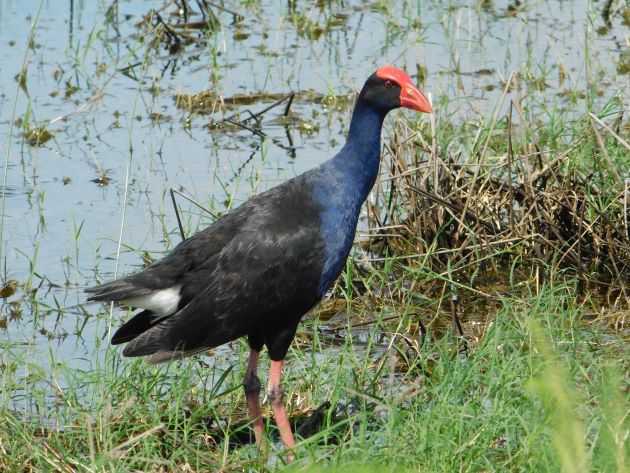
Australasian Swamphen on the edge of the highway
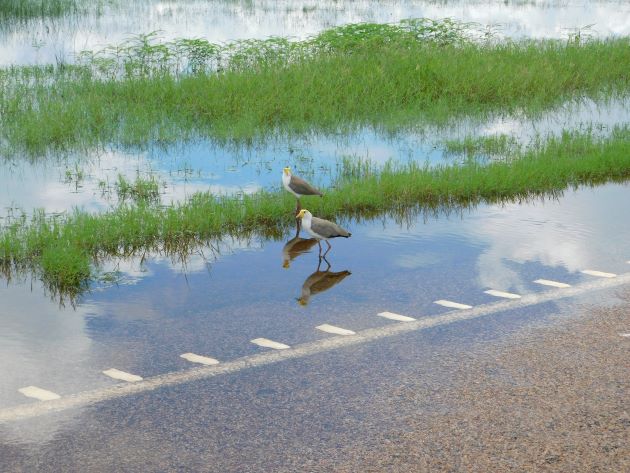
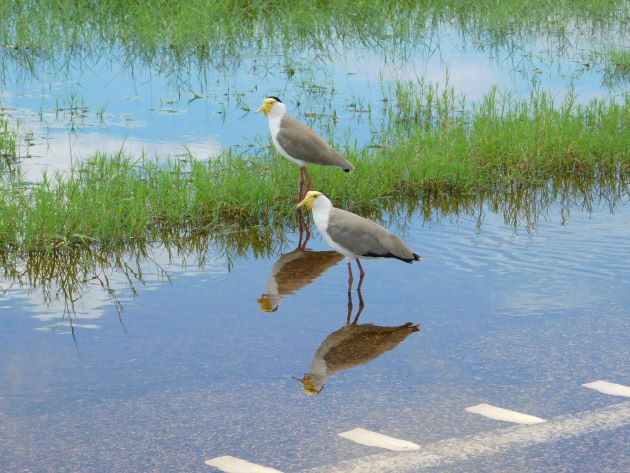
Masked Lapwings on the edge of the highway
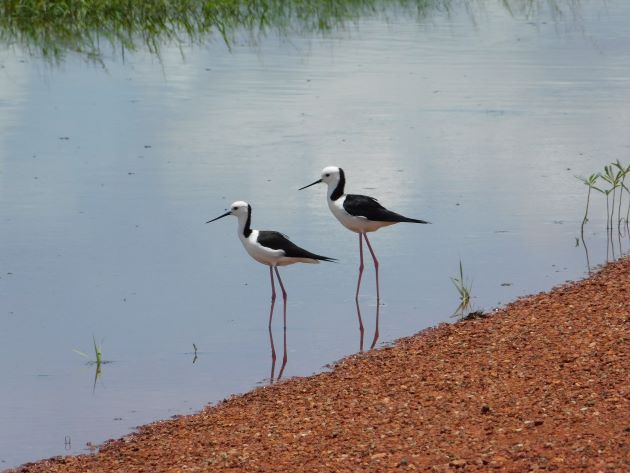
Black-winged Stilt on the edge of the highway
Every little bit of shade is taken up with an Australasian Pipit at the moment and there are also Black-fronted Dotterels along the edge of the flood water.
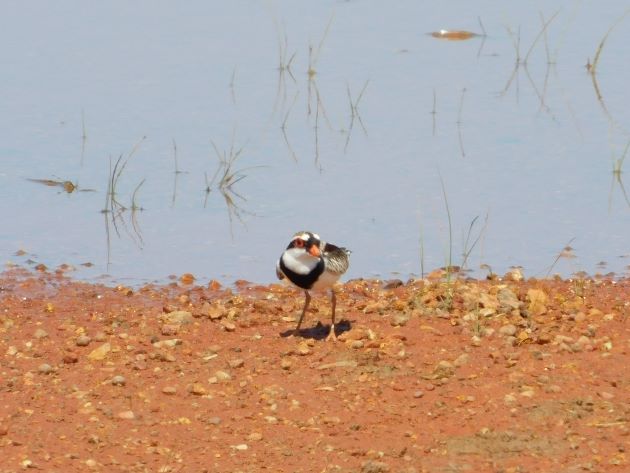
Black-fronted Dotterel on the edge of the highway
We know it is a long time until our wet season is over and we know that every opportunity we get to go out in our air-conditioned bird-hide will be rewarding. January alone put over 1 metre of rainfall in many rain gauges around the Kimberley, so unless you are flying you are not going too far from home right now.
There are worse places to be restricted to bird-watching from the bitumen for sure!













Leave a Comment